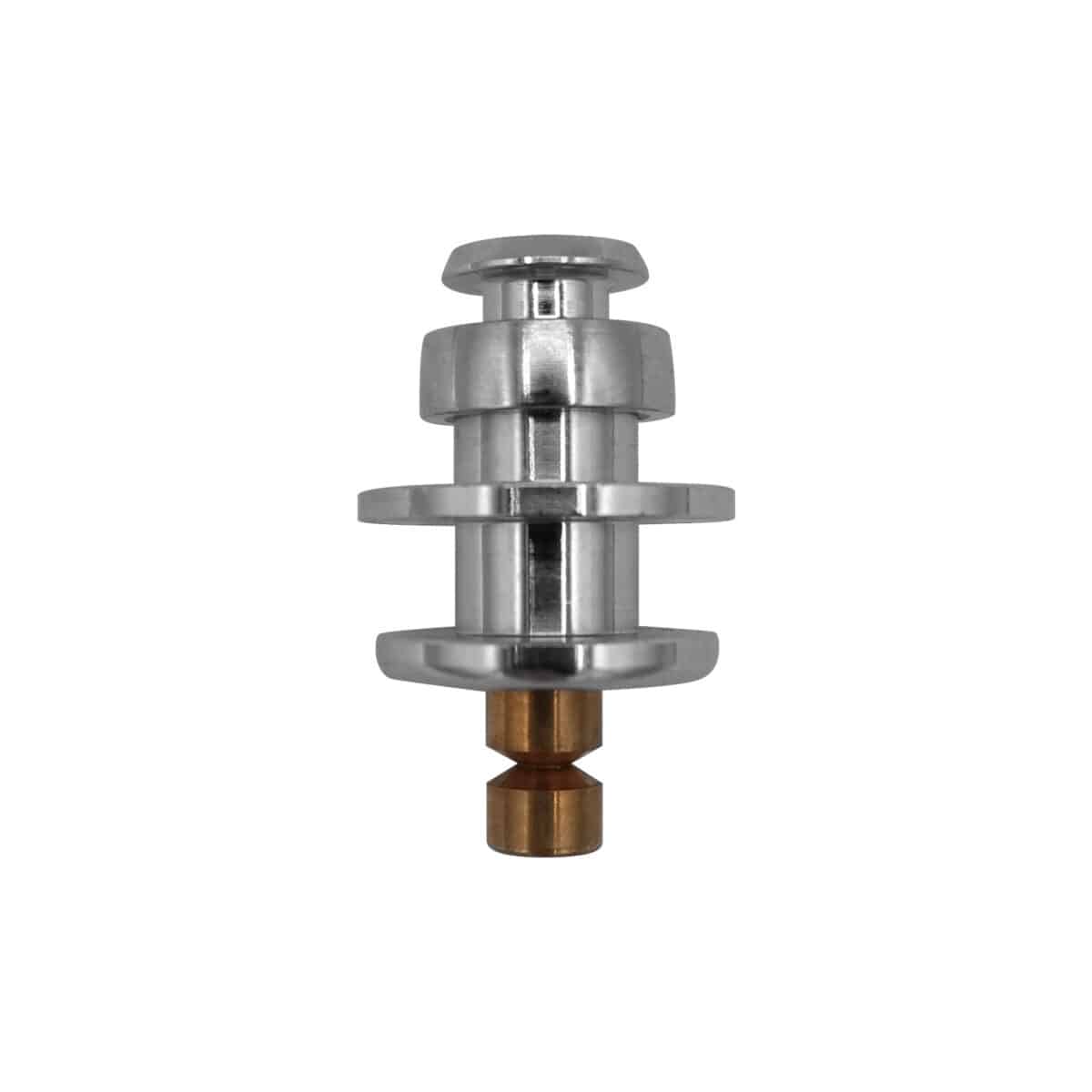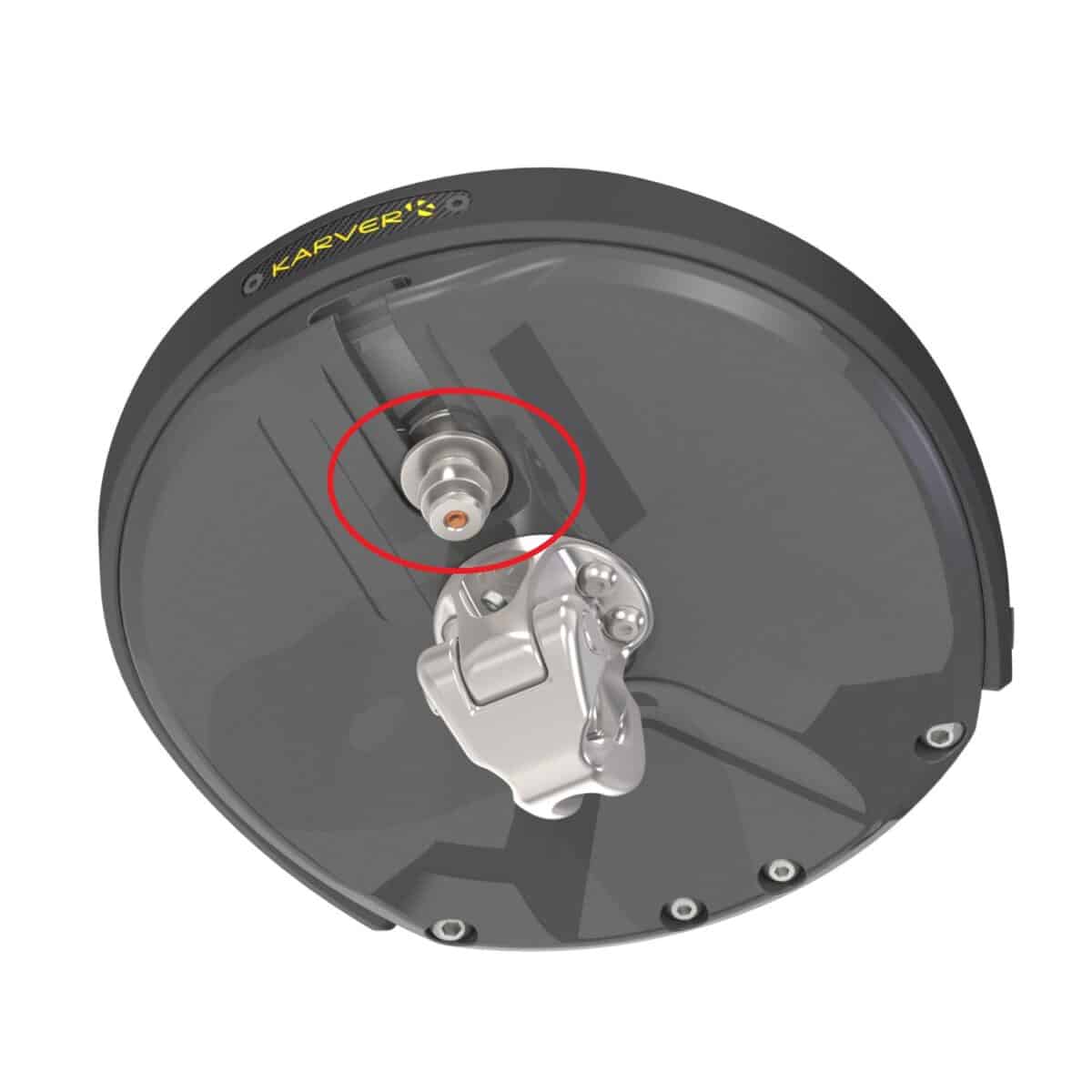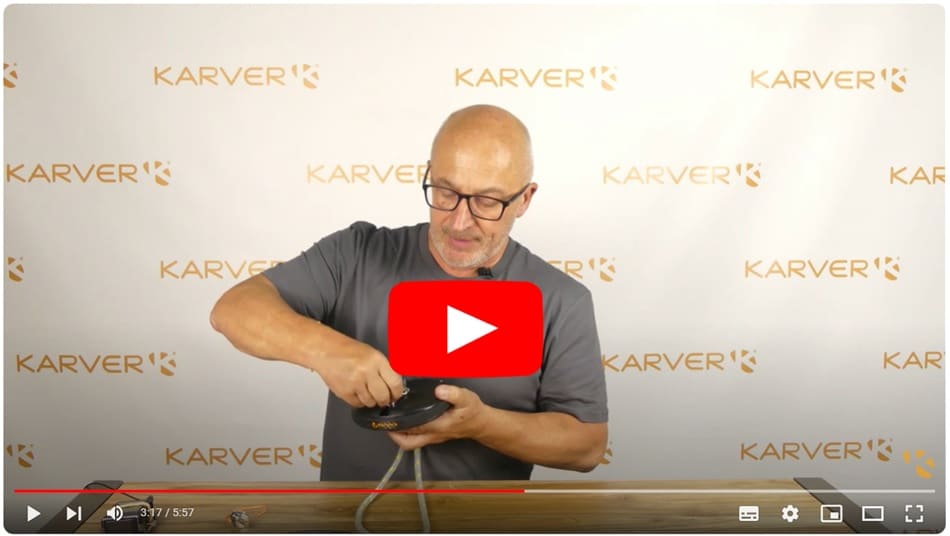
KF KARVER FLYING FURLERS
INSTALLATION & USE OF OUR RATCHET LOCK
Karver flying furlers are (almost*) all equipped as standard and at no extra cost with an anti-return / ratchet lock.
Please take a moment to read the following instructions to avoid possible user errors.
A video is sometimes better than long speeches: WATCH THE VIDEO (5mn)
If you only have to remember one thing:
Our furler ratchets lock and unlock using EXCLUSIVELY the PORT furling line or sail sheet.
(*) except KF0.9 and on certain racing versions of the KFV3 range (Kevlar carbon continuous line wheel)
YOU WANT TO KNOW MOR ABOUT IT?
A lock ? what For?
The lock purpose is to prevent your sail from unfurling during transition phases (hoisting the sail, lowering the sail, etc, …). Some sailmakers add Velcro to the clew for the same purpose. If your sail is already fitted with Velcro, our lock will likely do double duty and therefore there is no need to install it.
Can I use the furler unit without a lock ?
YES ! There is no obligation for you to put the lock in place. If you prefer not to install it, you will simply have to make sure to keep tension in the furling line to avoid unintentional unwinding.
If the lock is damaged, you can still carry on using your furler.
What should you pay attention to during the first uses ?
The operation of the lock is simple but the best advice is to do 2 or 3 operations on a day without too much wind to fully integrate its use.
We unlock the lock with the port furling line (3 cm is enough) then we simply unwind with the sheet
We roll with the port furling line. At the end of winding, the lock locks by itself when releasing the sheet
We advise you to clearly identify the port furling line and remember to explain to your crew how our furler works.
How to properly identify the port furling line ?
The simplest solution is to add a friction ring (open or closed) or a small block on the port furling line and attach it to the toe rail or stanchion closest to the area where you usually operate it. All you have to do is pull only on the strand that passes through the ring.


Can I furl using an electric winch ?
In theory, if the diameter of the furler is suitable for the size of your sailboat and the area of the sail, you should not need to use a manual or electric winch for furling. Either way, it’s entirely possible !
The lock does not work. What is going on ?
The lock acts as a fuse and breaks to prevent further internal damages on the wheel track device. Either the lock is not in place (see the video to put it back in place correctly), or the pin of the lock is broken. In most cases, this happens following a handling error between the starboard line and the port furling line. Only one solution : replace the lock. This is done in seconds and without tools. Replacement locks are on sale in our K-Shop and from our resellers. Remember that the lock is not an essential part for the operation of the furler. If the lock is bent or broken, remove it and use the furler without it.
How many lock models are there ?
There are 4 lock models. 2 for the V2 range (aluminum continuous line wheel) and 2 for the V3 range (carbon Kevlar continuous line wheel). For each of these versions there is 1 small lock and another larger one. Go to the replacement locks page of our site to choose the one that matches your furler. And if you still have any doubts…contact us.
Did you know ?
In 2010, Karver was the 1st furler manufacturer to integrate a lock system. 10 years later and after claiming it was a useless accessory, most of our competitors have designed their own system. To date, Karver is still the only one to offer this functionality at no additional cost.
Why didn’t you design a lock that works in both winding directions ?
We know that using only the port furling line is a constraint because it requires always clearly to identify the correct line, but it is an accepted and common sense choice. If you regularly change the direction of rolling, you will quickly damage the fibers of your sails and the anti-twist capabilities of your anti torsion rope or cable.
On which side should I install the UV strip ?
In 98% of cases, furling sails do not have a UV strip because they are not designed to stay in place (rolled up). If, however, this remains a subject for you, the UV strip must be installed on the starboard side. If the sail already has a UV stripe on the port side, we can sell a part that will reverse the direction of rotation.
Lock usage limit :
The furlers are designed for flying sails. If your sail must remain rolled up for several minutes/hours/days, you must secure it by blocking the two ends of the furling line (knot, cleat, etc, …). Our lock is not designed for long term storage.
If, despite these explanations, you feel in difficulty, do not hesitate to contact us for more information.
In addition, we recommend reading a few additional articles:
– 10 valuable tips for using your furler properly
– 8 technical problems on board catamarans that Karver can help you solve
Fair winds !



